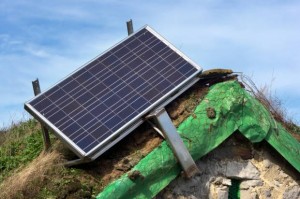Thursday, October 30th, 2014
Twilight Greenaway, - The Guardian (U.K.)
Stephan: I am beginning to see various assessments of what climate change is already doing to various economic sectors and have been paying particular attention to those that directly and very personally affect people's lives. Here is an example of what I am finding.

Credit: www.fanpop.com
What does climate change taste like?
It’s an odd question, but an increasingly pertinent one. After all, as temperatures rise and extreme weather becomes the norm, many food production systems are becoming threatened. As that trend increases, it’s worth asking which foods consumers will have to cut back on – or abandon entirely.
According to David Lobell,deputy director of the Center on Food Security and the Environment at Stanford University, “The general story is that agriculture is sensitive. It’s not the end of the world; but it will be a big enough deal to be worth our concern.”
One major issue is carbon dioxide, or CO2. Plants use the gas to fuel photosynthesis, a fact that has led some analysts to argue that an increase CO2 is a good thing for farming. Lobell disagrees, noting that CO2 is only one of many factors in agriculture. “There’s a point at which adding more and more CO2 doesn’t help,” he says. Other factors – like the availability of water, the increasing occurrence of high and low temperature swings and the impact of stress on plant health […]
No Comments
Thursday, October 30th, 2014
, - ABC 13/HealthDay News
Stephan: The explosion of childhood Type II diabetes that is found throughout the Western world where people consume mostly processed foods is bad enough. Now we are beginning to see a new trend: the rise of Type I diabetes in young Caucasian children, as this report spells out. It is receiving almost no attention except in the medical literature. I found the initial reference on HealthDay News, and went searching to see how many popular media outlets had picked it up. This ABC station in Toledo, Ohio was the only one I found.

Credit: www.sciencemediacentre.co.nz
The rate of type 1 diabetes has increased substantially among elementary school-age white children in the United States, a new study shows.
The study of young white people found nearly 6,000 new cases diagnosed in teens and kids ages 19 and younger between 2002 and 2009. Youngsters between 5 and 9 years old accounted for most new cases, while no increase was seen among kids younger than 4, the authors said. Boys were slightly more affected than girls.
Type 1 diabetes — previously called juvenile diabetes — is the predominant form of diabetes diagnosed in childhood. People with the disease lose their ability to produce insulin, a hormone needed to convert food into energy for daily life.
“The incidence has been rising in many other countries, particularly in Europe, but data from large populations in the U.S. were limited,” said the study’s lead author, Jean Lawrence, of the Kaiser Permanente Southern California department of research and evaluation.
More research is needed to better understand why the prevalence of type 1 diabetes among American children is on the rise, and what racial and ethnic differences […]
No Comments
Thursday, October 30th, 2014
Lindsay Abrams, Staff Writer - Salon
Stephan: In the last three days I have found four stories making the specious argument that we must continue to support carbon energy because it, and only it, will end poverty. I published one of the most glaring examples the other day. The truth however is rather different. Developing nations that are not already in the grip of the carbon energy corporatists are finding they can skip the whole carbon energy business in the same way they skipped the whole copper wire communications era, and went straight to wireless and mobile phones. And, when they make this decision, they discover how quickly they can develop power even in remote areas, as this essay describes.

A third world solar application.
Credit: mimadeo/Shutterstock
People who oppose a global shift to renewable energy sure have some funny ways of trying to make their case. Just last night, for example, someone emailed me to defend Sarah Palin’s comparison of climate change to eugenics, and to, in turn, accuse environmentalists of endorsing … genocide. His logic? Climate policy necessitates denying developing countries access to electricity, that electricity consumption is directly correlated with life expectancy. Take away fossil fuels, and you’ll have blood on your hands.
The accusation of genocide was a nice flourish, but this is actually a fairly common argument: Those wedded to fossil fuels often call upon a concern for the poor (a concern that, strangely enough, tends to disappear when the conversation turns to, say, food stamps). Media Matters has compiled some of those so-called crocodile tears for the poor in conservative media, from Fox News calling climate politics a way for “rich people” to “deny” resources to others to Rush Limbaugh […]
No Comments
Wednesday, October 29th, 2014
DEE-ANN DURBIN, AP Auto Writer - ABC News/The Associated Press
Stephan: I have some criticisms of this report because it gives a static cost for solar power when, in fact, it is dropping like an apple from a tree. Two years from now the per watt price is projected by some to be half what it is today. But, that said, this is wonderful news and as you read it think about the implications that flow from this confluence of the electric car and solar technologies.
This is what the country should have been focusing on, not endless wars and absurd Maiginot Line weapons systems like the F-35 or the Zumwalt class destroyers which were designed to fight a war style that is no longer relevant.
If we had committed to solar and electric cars at the time of the first Iraq War, in 1991, and spent what we have spent on wars in Iraq and Afghanistan in seven years, by 2021, we would have seen the end of gas stations, most pipelines, offshore drilling, fracking, and the much of the panoply of the carbon era. It will take much longer to complete eliminate petroleum in chemistry and other sectors -- it won't disappear like whale oil -- but it will be a fraction of its former self.

This July 2014 photo provided by Samuel Avery shows a 2014 Chevy Volt plug in Hart County, Ky. Avery, who is a professional solar installer, built both the garage and panel installation. A growing number of electric-vehicle owners are powering their cars with solar energy from panels on their homes.
Credit: AP Photo/Samuel Avery
Owners of electric vehicles have already gone gas-free. Now, a growing number are powering their cars with sunlight.
Solar panels installed on the roof of a home or garage can easily generate enough electricity to power an electric or plug-in gas-electric hybrid vehicle. The panels aren’t cheap, and neither are the cars. A Ford Fusion Energi plug-in sedan, for example, is $7,200 more […]
No Comments
Wednesday, October 29th, 2014
Lindsay Abrams, Staff Writer - Salon
Stephan: The BP catastrophe in the Gulf just never seems to end. If you watch their television ads there just a green and clean as they can be. The truth, as this report spells out, is rather different.

Credit: Wikimedia/U.S. Coast Guard
Remember last week, when BP was patting itself on the back for its “unprecedented response” to a disaster of its own making, and assuring us all that, four years after its massive oil spill, the Gulf of Mexico is doing just fine?
Well, an estimated 80,000 to 620,000 barrels of oil still coating the bottom of the Gulf says that was bullshit.
This latest (certainly not the first) indication that the Deepwater Horizon catastrophe is far from over comes via geochemists at the University of California-Santa Barbara, who took a look at the 2 million or so barrels of BP oil gone missing in the spill’s wake, and believed to have settled in the deep ocean. Their results, published Monday in the Proceedings of the National Academy of Sciences, estimate that somewhere between 4 and 31 percent of that oil has come to rest, splattered in drops and globs across some 1,235 square miles of seafloor.
“It’s a lot of oil,” confirms lead author David Valentine. His team analyzed samples […]
No Comments
















